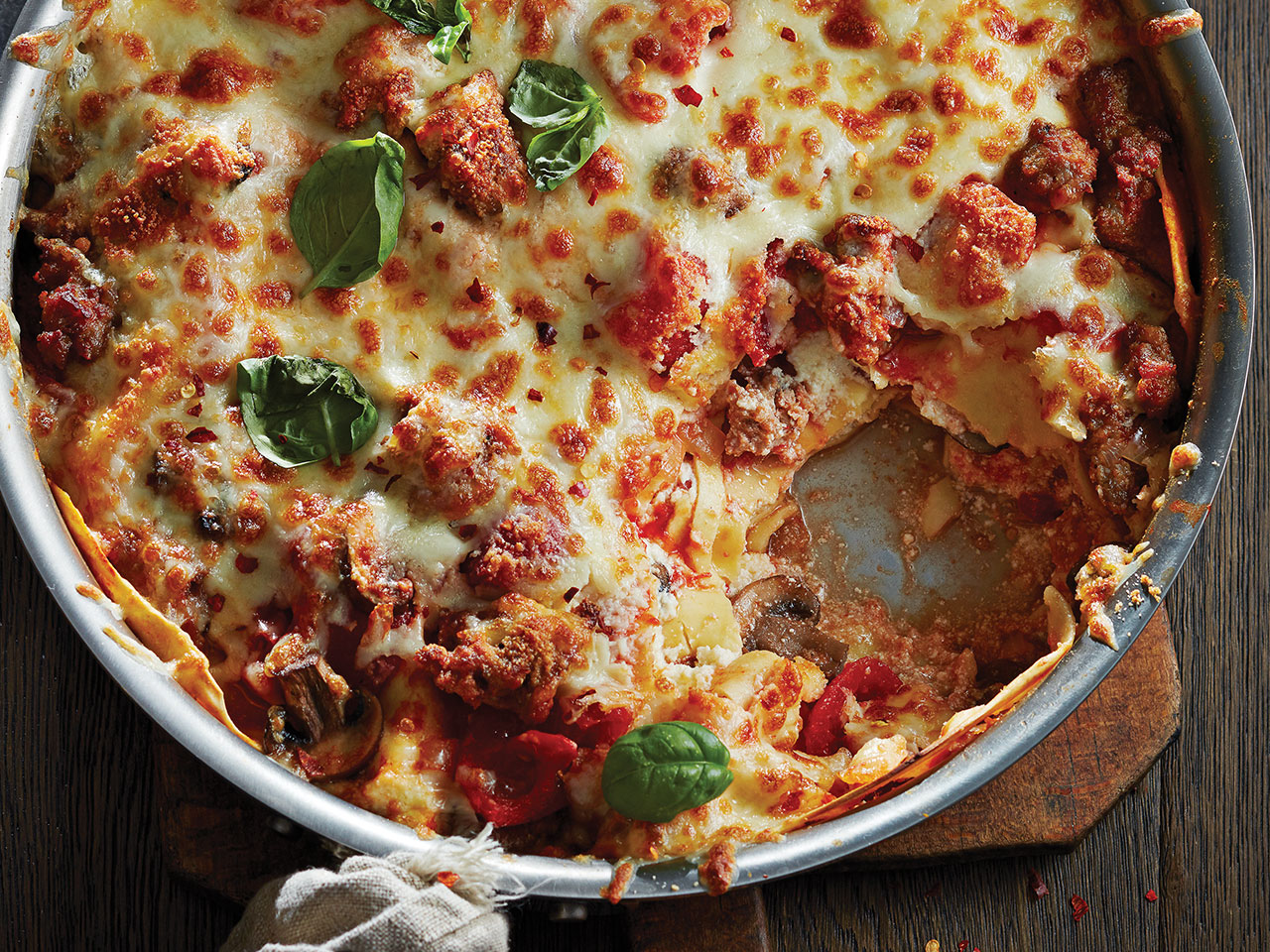Why food sticks and how to avoid it when cooking with stainless steel pots and pans.

Stainless steel pans can go from stove-top to oven! Photo, Roberto Caruso.
Let’s face it, all home cooks have experienced the frustration of having our food get stuck to a stainless steel pan. The luxury and availability of non-stick pans has allowed us to cook almost worry-free. But, there are times when a stainless steel pan is a necessity. For me, it’s a must when I’m building a sauce and want to accumulate flavours, or when I want to brown or develop colour, and sometimes I just prefer using a pan that isn’t coated with a non-stick treatment.
Here are a few quick tips for cooking efficiently with stainless steel.
Why does food stick?
The main culprit is heat—either too much or too little. When oil is added to a hot stainless steel pan, it acts as a protective barrier between the food and the pan. Although the cooking surface of your pan looks perfectly smooth, there are actually many microscopic hills and divots that the oil fills. When food is added to the pan, a reaction occurs between the hot oil and the natural moisture in food. This reaction causes a steam-like effect, essentially lifting the food away from the pan, and preventing it from sticking.
If your pan is too cold when you add food to it, you will not hear that sizzle. No sizzle means the food has not lifted away from the pan and will stick. If your heat is too high, food has a tendency to burn, and burnt food will also stick to the pan. This burnt flavour will also transmit to the rest of your food.

(Photo, Roberto Caruso.)
Tips for cooking with stainless steel
The reality is that stainless steel is not a great heat conductor. Therefore, a stainless steel pan needs to be properly prepared in order to get the best results.
Heat your stainless steel pan well
Place your empty pan on a burner over medium heat. Let the pan heat up for 2 to 3 minutes at this temperature. It’s up to you if you want to add the oil while the pan is warming up, or add the oil once the pan is hot. I prefer to get my pan good and hot first, and then I add the oil. (Sometimes, when adding cold oil to a cold pan, the oil heats up faster than the pan—this gives the illusion of a hot pan, but really all the heat is in the oil.)
Do the “tss” test
To test if your pan is ready, drop a very small morsel of food or a single drop of water into the pan. If you hear the “tss” sound, your pan is ready. It’s always a good idea to start your pan at medium heat, and make adjustments from there.
Dry food is best
Water combats the heat by bringing the temperature of the oil down. If you are cooking with vegetables that have recently been washed, make sure they are good and dry. Also, pat down meat with a paper towel to remove any surface moisture.
Cold food is a no-no
As water combats heat, so does cold food. Adding cold food to a pan works against the heat you have established. Meat and vegetables should be brought down to—or at least close to—room temperature before cooking in stainless steel.
Some foods just stick
I don’t know how many times I’ve tried to make an omelette in a stainless steel pan, but it has never come off cleanly. Some foods—eggs in particular (and proteins in general)—have a tendency to stick. Choose your battles. For me, that means cooking eggs in a non-stick pan.
Clean and care for your pan
While the pan is still warm, wipe out any residual oil or crumbly bits with a paper towel (mind the heat and use tongs if necessary). Return the pan to medium heat. When the pan is hot, pour in 1 cup of hot water to deglaze. Use a wooden spoon to scrape away any stubborn bits. Discard the water. Wipe again with a paper towel and then clean in hot soapy water. I personally don’t consider stainless steel to be dishwasher safe—dishwasher detergent can be very harsh and may leave a residue.
Two stainless steel skillets we love
Made In 12-In. Stainless Clad Frying Pan, $220
This direct-to-consumer kitchenware brand has consistently outscored bigger brands on quality, heat responsiveness and pan shape. The gentle, angular slope of the sides offer extra surface area for cooking—and the 12-in. pan, while pricey, can handle almost any type of job, from a large-format risotto to a bacon-and-egg breakfast for four.

Shop Now
All Clad 12-In. Stainless Steel Skillet, $185
All Clad’s reputation for long-lasting durability is well-earned; if properly cared for, this professional-grade stainless-steel skillet will last for decades. This brand also often goes on sale at major retailers, so keep an eye out for deals.

Shop Now
Here are a few recipes that suit cooking with a stainless steel pan:
Seared Pork Chops with Creamy Mushrooms
Hong Kong Chicken Curry
Lamb Chops with Pomegranate Bulgur
Spicy Thai Fish
Originally published March 23, 2012.
